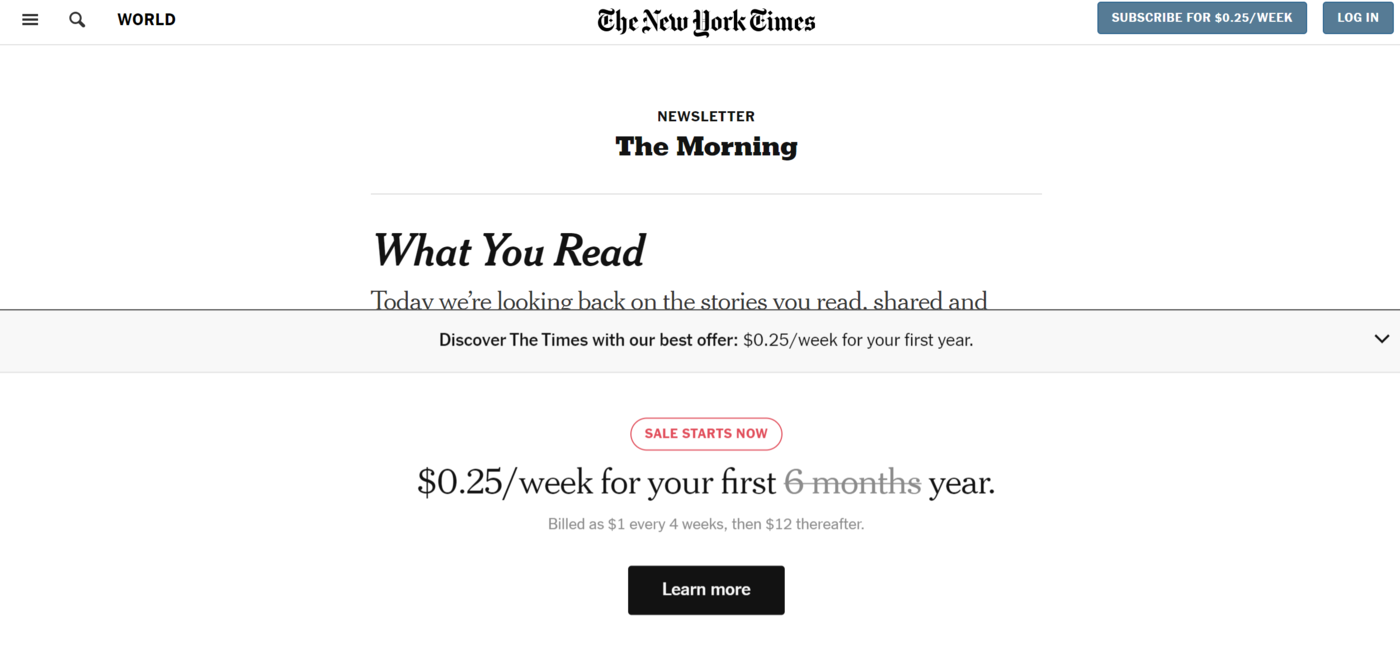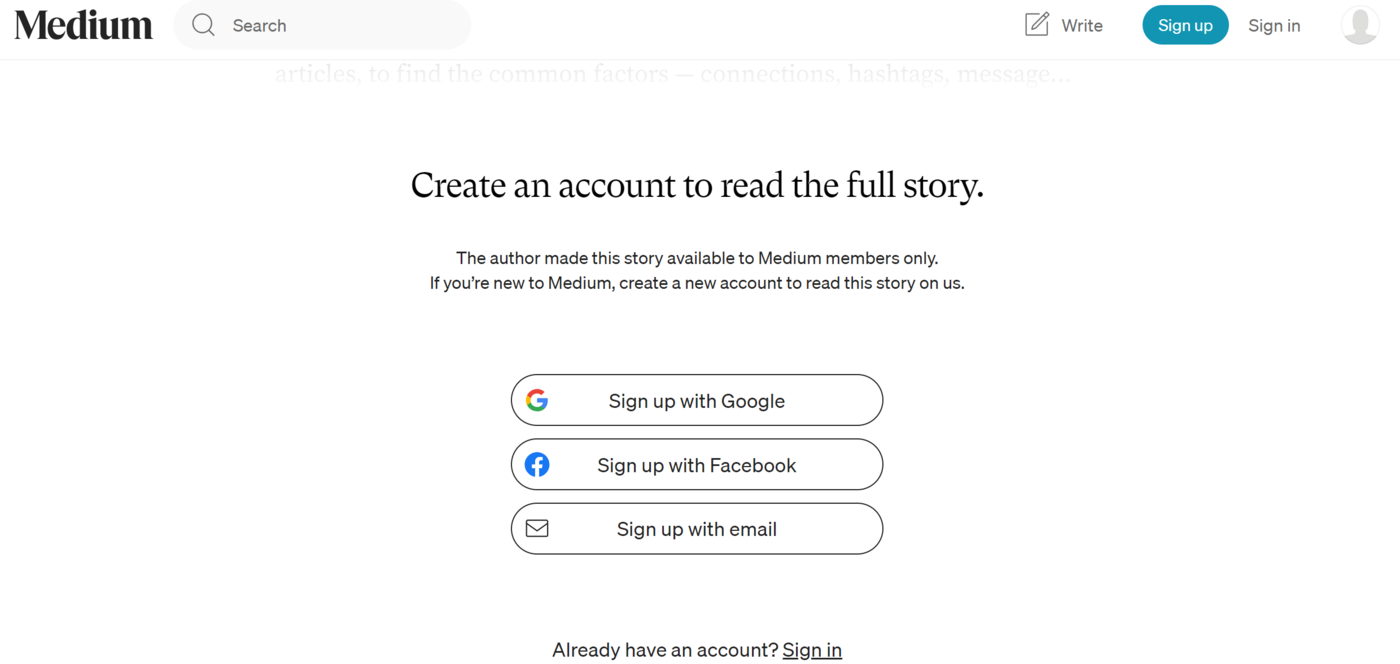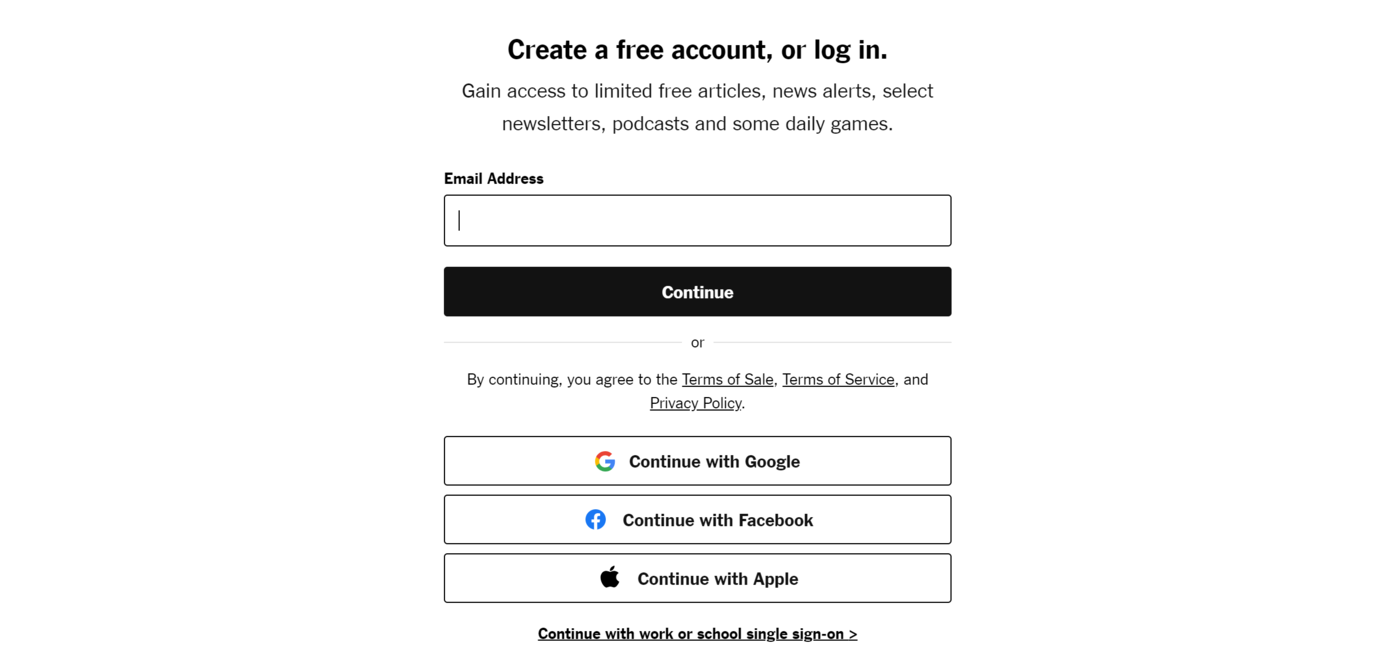¿Qué es el contenido privado?
Gated content is content that is accessible only after visitors sign up to the site, purchase a subscription, or share their contact details. The content could be an article, news item, email, webinar, blog post, document, research paper, or a free online course.

Gated content is a common lead generation and site monetization technique. Many sites use it to attract more subscribers to their newsletters or generate leads that can be followed up for future business.
In the case of subscriptions, the site wants the visitor to pay for access. This is typically a monthly or annual subscription, but it may also be a one-off payment.
While gated content is a great way to gain subscribers, it could prevent search engine crawlers from accessing the content, making them less likely to be displayed in search results.
Examples of Gated Content
Gated content generally falls into two categories: paywalled content and lead magnets. Paywalled content requires users to make a one-time payment or subscription, while lead magnets offer valuable resources in exchange for users’ contact information.
1 Paywalled Content
Paywalled content refers to content that requires visitors to pay for access, either through a one-time payment or a monthly or annual subscription. The paywalled content is usually available online, and the visitor can access it after payment.

2 Lead Magnets
A lead magnet is a resource offered to visitors in exchange for their contact details. It could be a PDF file, template, webinar, or online course. Lead magnets may or may not be accessible online. For example, many sites send the lead magnet to their subscribers via email rather than making it publicly available on the web.

Importance of Gated Content
Gated content is crucial in generating leads and building a direct relationship with your audience. Additionally, it allows companies to monetize their content and nurture their audience with exclusive content.
1 Lead Generation
Many sites use gated content to generate more signups for their email lists. Some sites, particularly those that sell services, also use it to collect the contact details of their potential customers.
The gated content given in return is typically called a lead magnet. Such lead magnets allow the blogger or business to directly access their target audience without relying solely on Google for traffic.
2 Monetization
Many sites rely on customer subscriptions to remain in business. This is more common with news sites, which typically require visitors to subscribe to access their content.
This gated content is called paywalled content. In such cases, the site may provide its visitors with the above the fold part of the content for free and require them to subscribe to continue reading. Some even offer free articles, and customers encounter the gated content after exceeding the limit of their free articles.
Gated vs. Ungated Content
The decision to gate your content depends on whether you want to rank on Google. Gated content does not always rank well on páginas de resultados de búsqueda, so gating could be a good idea if you offer exclusive, high-quality content visitors cannot find elsewhere.
To succeed with gated content, you often need a steady flow of a dedicated audience or a lead generation system that drives visitors to your site. On the other hand, with ungated content, you can rank more easily on Google without relying on a separate lead generation system.
Gated Content Best Practices
If you decide to introduce gated content to your site, it is recommended to follow best practices to ensure that your content complies with Google guidelines and provides visitors with a positive user experience.
1 Use the Noindex Meta Tag
Google can crawl certain gated content on the web and display it on its results pages. Visitors can then access it without giving you their details. This is particularly true for online courses, videos, webpages, and PDF files you sell or use as lead magnets.
To prevent such, Google recomienda including a noindex meta tag to the webpage containing the content. That way, Google will not index or display the content on its results pages. However, this only applies to content you do not want on Google.
2 Include a Paywalled Content Structured Data
Google recomienda that you include a subscription and paywalled content datos estructurados to gated web content. The structured data allows Google to understand the content of the article. It also assures Google that you are not engaged in cloaking.
However, you should only add it to gated content that you want Google to crawl, index, and display on its search results pages. If you do not want the page on Google, consider the noindex meta tag.
3 Follow Google Flexible Sampling Guidelines
Many sites offer you some content for free before requiring you to consider a subscription to read further content. This is called flexible sampling. It is mainly used by sites that require a subscription to access their content.
Google recomienda giving users between 6 and 10 free content a month before requiring them to subscribe. Optionally, you can display the top part of the content and require visitors to subscribe to read the rest of the content.